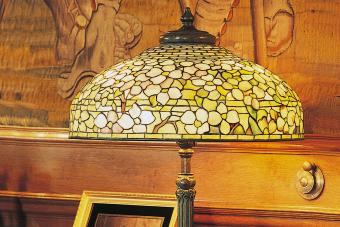
EBay shopping is a wonderful way to build your collection! If you've never bid on eBay before, don't worry. Their website has clear directions for opening an account and bidding. A little more information can make eBay shopping even more fun for collectors.
Efficient eBay Shopping
If you know exactly what you want, the simplest method of finding the item is to use search function. Keep in mind that people often use different names for the same item. The Bohus sweater c. 1941 that you're searching for might be listed as 'vintage Scandinavian sweater' or even just 'vintage sweater' in eBay shopping. Use alternate terms for a complete search.
You can also browse their categories, just as you would browse an antiques market. You may find their methods of organization a little confusing at first. Many collectors think in terms of a specific style or period - Chippendale, for example, or Art Deco - and include any objects displaying the defining characteristics of that style within their area of interest. Auctions on eBay are typically categorized first according to the kind of object being sold - chairs, for example - and then by time period such as Pre-1800, 1800-1900, and Post-1900. You can try using different terms for the same thing, such as piano stool or piano bench as well.
Research before Bidding
If you are a collector, you probably already know a great deal about the particular objects you collect. Even so, check the recent history of similar items on eBay before you bid. The advanced search function will allow you to limit your search to completed auctions. You can see the winning bid amounts and review individual listings for complete descriptions of the items.
Be sure to check the shipping and handling costs. The buyer is responsible for these costs, and a very low winning bid could have been offset by very high handling costs.
Be sure to ask the seller any questions before you bid and make sure that you understand, and are happy with, the answers.
Check the Seller's Reputation
Check the seller's feedback. EBay offers both the buyer and the seller an opportunity to rate the other after each auction has been completed. While any seller who has completed thousands of sales will probably have a few unhappy customers, be wary of a seller with a feedback score of less than 95% positive.
Read the seller's About Me page. Not only will you learn more about that person's level of expertise, but you will also form an impression of the seller's personality.
EBay tries hard to monitor sellers, but the Latin expression "caveat emptor", which translates loosely into "let the buyer beware", still applies to eBay shopping. Even well-intentioned sellers can make mistakes, and every fan of Antiques Road Show knows that dishonest antique dealers are not a rarity.
Verify Item
You can request that the antique or collectible item is authenticated and/or graded before you bid on it. An independent evaluator can examine an item listed on eBay and point out potential problems. There is a small fee for this service.
Keep in mind that online evaluations depend on information and images supplied by the seller. If the item is important to you, feel free to request an in-person evaluation by a licensed appraiser. The International Society of Appraisers maintains a list of qualified and licensed professionals.
Bidding
It's easy to get caught up in the moment and spend too much money for your purchase. The best way to avoid this is to decide in advance exactly how much the item is worth to you. Get all the information you need to determine the object's desirability, consider shipping, handling, insurance, and (possibly) appraisal costs, and decide what you are willing to pay. Don't bid more than that amount; no matter how much fun you are having shopping eBay.
Remember that a bid on eBay, like a bid at an ordinary auction, is legally binding. There are ways to revoke your bid under special circumstances - for instance, if you accidentally typed in $200.00 instead of $20.00 - but usually you will be expected to follow through and pay for any item you win.
Payment
The safest way to pay for your purchases when shopping eBay is through PayPal. They are familiar with eBay's auction system, and the companies work closely together to help resolve any transaction problems. Payment by credit card is also quite safe, if the seller is set up to accept credit card payments. Most companies have customer protection policies to protect buyers.
For large purchases, use an escrow service. EBay recommends escrow for any purchases greater than $500.00. The service affiliated with eBay is Escrow.com, and you can find more information about their service there.
Don't send payments through wire transfer services such as Western Union or MoneyGram. They provide no protection if the item is lost, damaged, or otherwise unsatisfactory. Wire transfer payments are not covered under eBay's Standard Purchase Protection Program, so they can't help you if something goes wrong.
If you do have a problem with an item you have 45 days to open a case to have it resolved. Be sure to contact the seller first and give them a chance to resolve the issue. If they won't then you can file a case in the Resolution Center on eBay. The seller will be contacted and asked to make things right. If he still doesn't comply your money will be refunded by eBay, including any shipping charges.
eBay Has a Wider Variety
Shopping on eBay can save you money on your favorite collectibles as well as expose you to wider variety than might be available locally. You can find specialty items there that are not often seen in local antique shops unless you get lucky. The ease of shopping is a great benefit as well.
Have fun but be a wise shopper.







